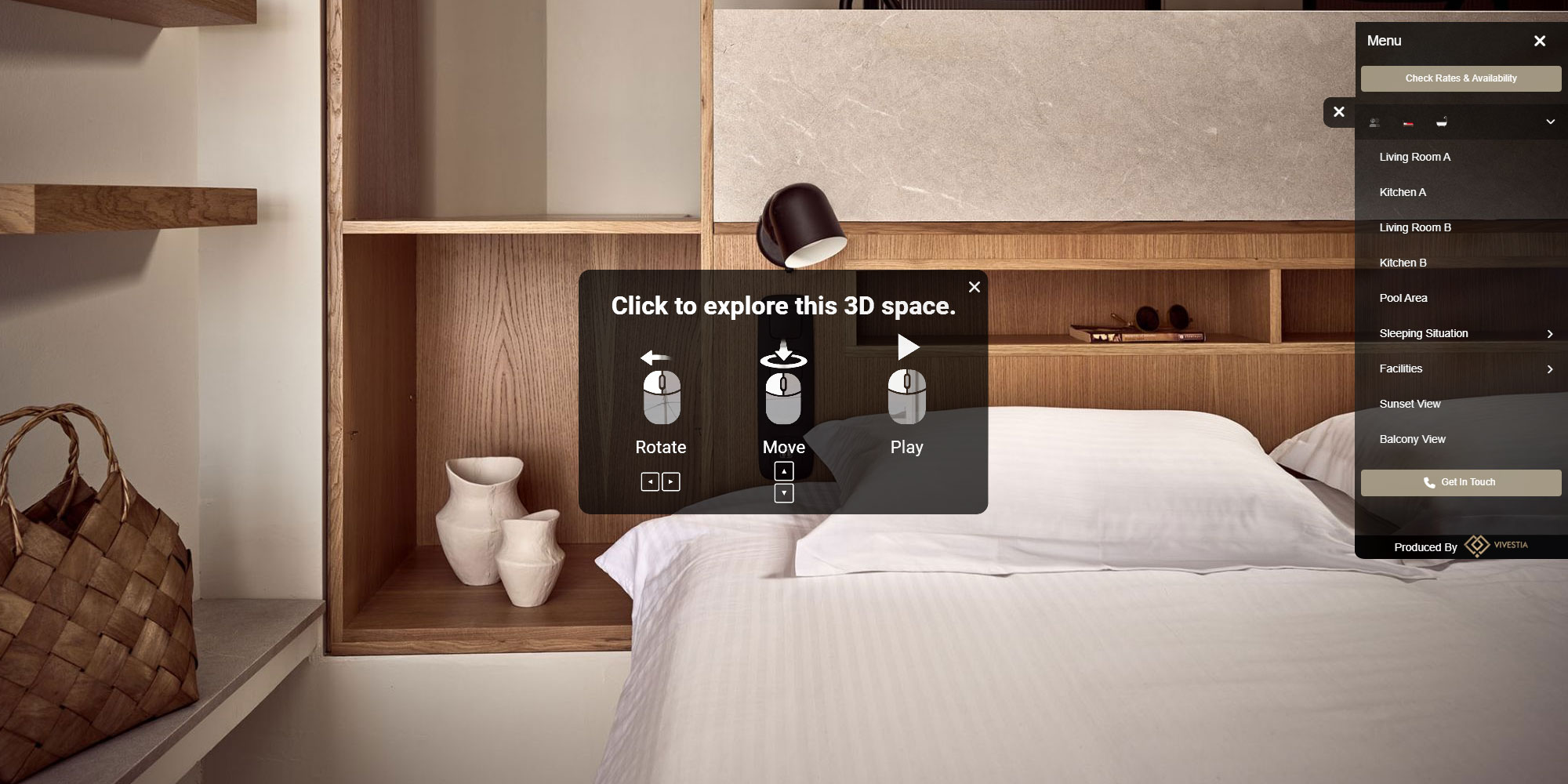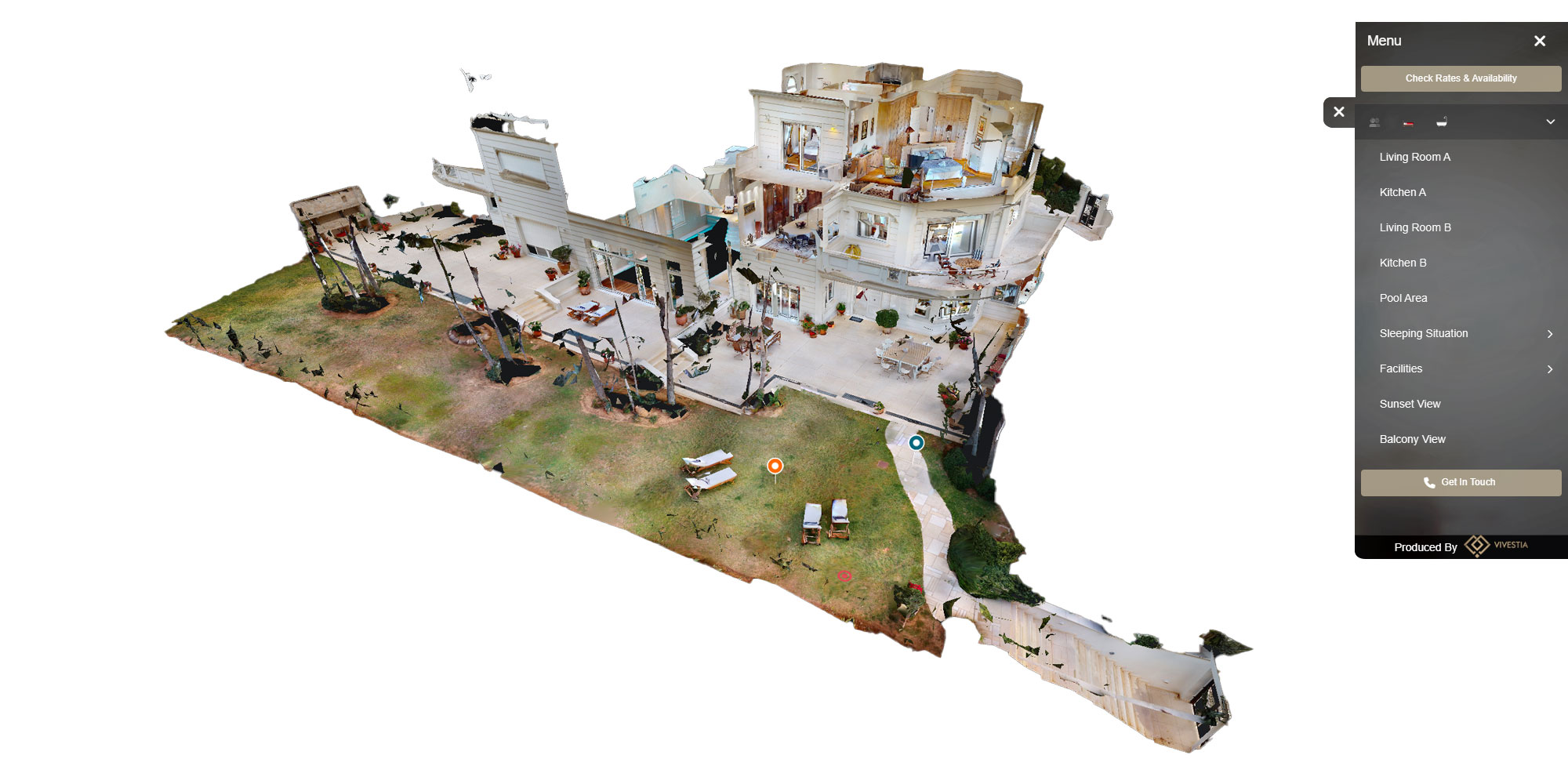Last Updated on 28/12/2023 by Manolis Maragkoudakis
Enhancing Real Estate Listings: The Power of 360 Virtual Tours

360 Virtual Tours
In today’s digital age, visual content plays a crucial role in attracting potential buyers and investors to real estate listings. Gone are the days of relying solely on static images and written descriptions to showcase properties.
With the advent of technology, real estate agents and developers are now harnessing the power of 360 virtual tours to provide immersive and interactive experiences for their clients. In this article, we will delve into the world of 360 virtual tours and explore the numerous benefits they offer in enhancing real estate listings.
The importance of visual content in real estate listings
When it comes to browsing through real estate listings, potential buyers and investors are drawn to captivating visual content that allows them to envision themselves in the property.
Traditional static images and floor plans, although informative, often fail to provide a comprehensive understanding of the space. This is where 360 virtual tours come in. By offering a dynamic and interactive experience, these tours enable viewers to virtually explore every nook and cranny of a property, gaining a true sense of its layout, size, and overall ambiance.
What is a 360 virtual tour?
A 360 virtual tour is a multimedia presentation that allows users to navigate through a property as if they were physically present. It typically consists of a series of high-definition photographs or videos stitched together to create a seamless, panoramic view.
Users can control their perspective by dragging their cursor or using their fingertips on a touchscreen device to look around in all directions. With the ability to zoom in and out, viewers can examine even the smallest details, such as fixtures, finishes, and architectural features.
Benefits of using 360 virtual tours in real estate listings
1. Enhanced engagement and interest
360 virtual tours provide an engaging and interactive experience that captivates potential buyers and keeps them on your listing for longer periods. By allowing them to virtually explore a property at their own pace, you can generate more interest and increase the chances of receiving inquiries.
The immersive nature of these tours also creates an emotional connection, enabling viewers to visualize themselves living or working in the space.
2. Time and cost savings
Traditionally, scheduling multiple property viewings can be time-consuming and costly for both real estate agents and potential buyers. With 360 virtual tours, however, you can significantly reduce the need for physical visits.
This not only saves time and money but also ensures that only serious and genuinely interested buyers request in-person tours. Moreover, virtual tours can be easily shared across various online platforms, reaching a wider audience without the need for additional resources.
3. Increased transparency and trust
Real estate transactions often involve a significant financial investment, making trust and transparency crucial. 360 virtual tours provide a comprehensive and accurate representation of a property, leaving no room for surprises or disappointments
By showcasing every aspect of the space, including potential flaws or limitations, you can build trust with potential buyers and establish yourself as a reliable and honest agent or developer.
Incorporating 360 virtual tours into your real estate marketing strategy
Now that we have explored the benefits of using 360 virtual tours in real estate listings, let’s discuss how you can effectively incorporate them into your marketing strategy.
1. Hire professional photographers or agencies
To ensure high-quality and visually appealing virtual tours, it is advisable to hire professional photographers or agencies experienced in creating 360 content. They possess the necessary equipment and expertise to capture stunning visuals and produce seamless tours that showcase your properties in the best light. Remember, the quality of your virtual tours reflects the quality of your listings and your brand as a whole.
2. Integrate virtual tours into your website and online platforms
Make sure to embed your 360 virtual tours directly into your website and other online platforms where you showcase your listings. This allows potential buyers to easily access and explore the tours without having to navigate to external websites or platforms. By keeping everything in one place, you provide a seamless and user-friendly experience, increasing the chances of engagement and inquiries.
3. Utilize social media and email marketing
Leverage the power of social media and email marketing to promote your 360 virtual tours. Share snippets or highlights of your tours on platforms like Facebook, Instagram, and YouTube to generate interest and drive traffic to your listing.
Additionally, consider sending out targeted email campaigns to potential buyers or investors, featuring your virtual tours as a unique selling point. By reaching out to a wider audience through these channels, you can significantly increase the visibility and reach of your listings.
Common misconceptions about 360 virtual tours in real estate
Despite their numerous benefits, there are still some common misconceptions surrounding 360 virtual tours in real estate. Let’s debunk a few of them:
1. Expensive and time-consuming
Contrary to popular belief, creating 360 virtual tours doesn’t have to be expensive or time-consuming. With advancements in technology and the availability of user-friendly software, you can now capture and produce your own virtual tours at a fraction of the cost. Additionally, once you have a library of virtual tours, you can easily reuse them for multiple listings, saving both time and money.
2. Limited audience reach
Some may argue that virtual tours limit the potential reach of your listings, as not everyone has access to the necessary technology or prefers this type of viewing experience.
However, the increasing popularity of virtual reality (VR) headsets and the widespread use of smartphones make virtual tours accessible to a large audience. Moreover, even those who choose not to engage with virtual tours can still benefit from the additional visual content you provide.
3. Lack of personal touch
While it’s true that virtual tours cannot completely replace in-person viewings, they serve as a valuable tool in the initial stages of the buying process. Virtual tours allow potential buyers to narrow down their choices and only request physical viewings for properties that truly interest them. This saves time for both parties and ensures that in-person viewings are more focused and productive.
Conclusion: The future of real estate listings with 360 virtual tours
As technology continues to advance, so does the way we present and market real estate listings. 360 virtual tours have become a powerful tool in enhancing the visual content of these listings, providing an immersive and interactive experience for potential buyers and investors.
By incorporating virtual tours into your marketing strategy, you can increase engagement, save time and costs, and build trust with your audience. So, embrace the power of 360 virtual tours and stay ahead in the competitive real estate industry.
CTA: Are you ready to revolutionize your real estate listings? Contact us today to learn more about how 360 virtual tours can enhance your marketing strategy!






Post Discussion